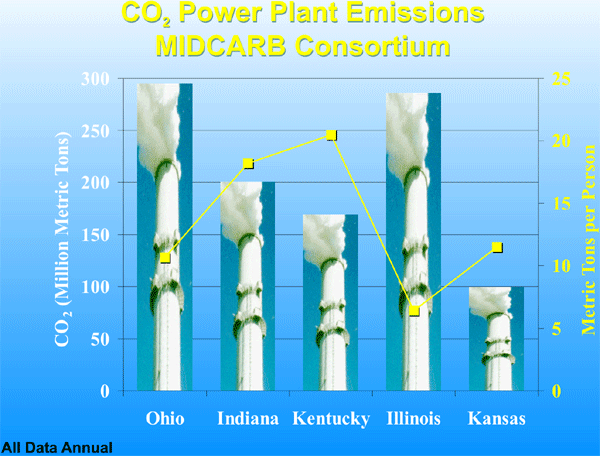 |

|
Kansas Geological Survey Open-file Report 2003-33 |
Current federal energy policy assumes that hydrocarbons will continue to be the primary source of energy for the United States and the world well into the 21st century. However, there is concern about increasing atmospheric concentrations of carbon dioxide and its possible role in global climate change. For this reason, it may become necessary to manage anthropogenic CO2. Sequestering CO2 in geological reservoirs may be one way to safely sequester carbon over long periods of time, if the proper tools to analyze the geological feasibility as well as the associated costs can be developed.
Electrical Energy Generation
Illinois |
Ohio |
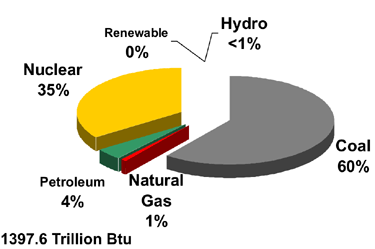 |
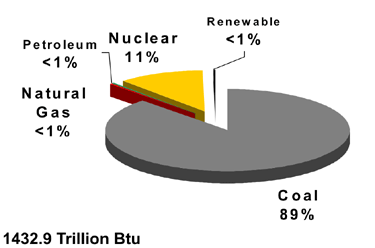 |
Kansas |
Indiana |
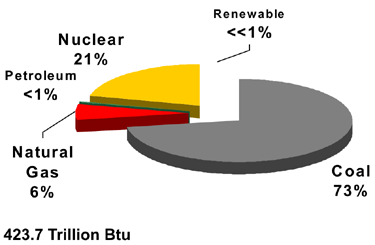 |
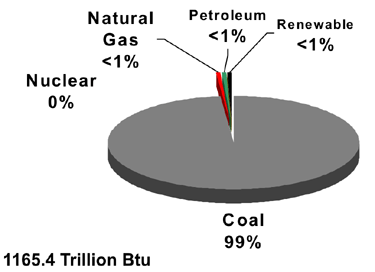 |
Kentucky |
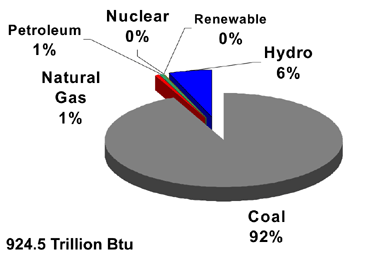 |
Overall, the CO2 sequestration potential of the Midcontinent
states of Illinois, Indiana, Kansas,
Kentucky, and Ohio is large, but local variations suggest that any carbon
management plan will
have differential impact. Variations among states must be addressed (e.g.,
smaller oil and gas
industry, but much larger coal industry). The spread of states in the ongoing
MIDCARB project
has a wide range of populations, industry, agriculture, and fossil energy
resources. Each of the five states in the MIDCARB consortium has a different
mix and distribution of large, stationary CO2 sources and potential geologic
sequestration opportunities. All states have a responsibility to attempt
to reduce potential costs, maximize potential revenue, guard public safety,
and assure long-term effectiveness of carbon management policies. Carbon
management will have significant and differential effects on economic activity
and fuels used for energy generation among states and even among regions
within a single state. Viable carbon management will need the best local
knowledge of local geologic and energy economic conditions.
|
|
Last updated June 2003
http://www.kgs.ku.edu/PRS/publication//2003/2003-33/P1-04.html
